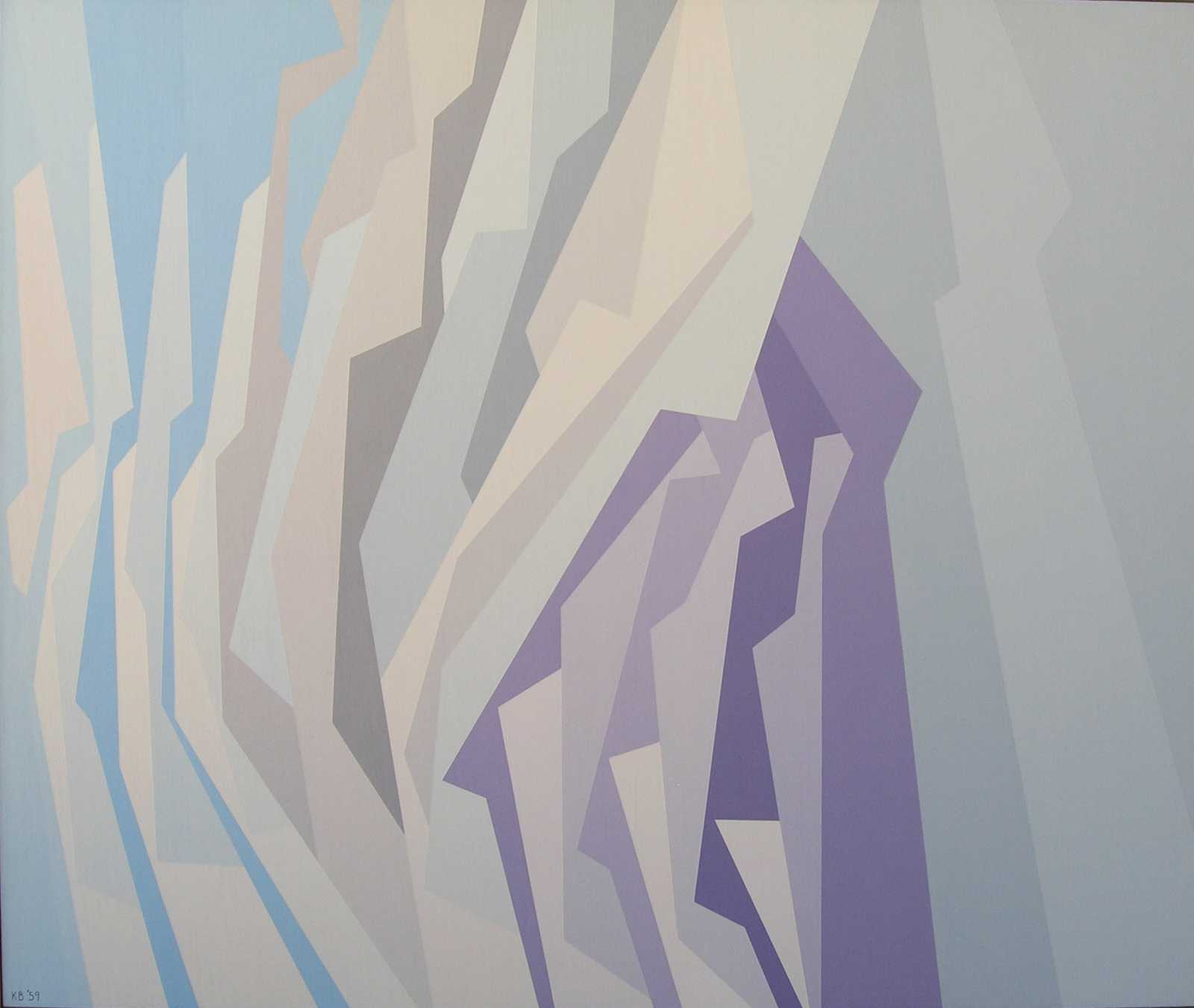Artworks of the Week
Karl Benjamin
Karl Benjamin never intended to become an artist. He graduated in 1949 with a degree in English literature, history, and philosophy, and later became interested in art, eventually earning a Master of Arts degree from Claremont Graduate School in Southern California. He immersed himself in the art, architecture and design of the mid-twentieth century, and became associated with the hard-edge painting that developed in Southern California at that time.
In 1959, Karl Benjamin, Lorser Feitelson, Frederick Hammersley, and John McLaughlin were all included in the era-defining exhibition Four Abstract Classicists at the Los Angeles County Museum (then in Exposition Park). The exhibition’s curator, Jules Langsner, described hard-edge compositions as “finite, flat, rimmed by a hard, clean edge. These forms are not intended to evoke in the spectator any recollections of specific shapes he may have encountered in some other connection. They are autonomous shapes, sufficient unto themselves as shapes.” This can be seen in Interlocking Forms (blue, lavender, white), where Benjamin uses asymmetrical and repeating forms and colors to create balance and disharmony, stasis and dynamism.
Karl Stanley Benjamin (American, 1925-2012), Interlocking Forms (blue, lavender, white), 1959, oil on canvas, 50 × 60 inches. Gift of Dr. and Mrs. Alan Leslie, 1-2001
Donald Judd
This wall-mounted sculpture manifests several qualities that characterize Donald Judd’s mature work: the use of industrial materials and fabrication, an interest in clarity and proportion, and an absolute rejection of illusionism. Constructed of anodized aluminum and Plexiglas by craftsmen who were guided by the artist’s precise specifications, the resulting form is a box—open on one side, bisected vertically, with tight seams and visible rivets—that does not attempt to represent or conjure anything; or to refer to anything other than itself.
However, the work is also a compelling study of texture and surface: the matte, opaque, subtly striated gray aluminum contrasts with the glossy, transparent, deep green and vibrant orange Plexiglas. And when the work is installed at a height of about five feet, as it is at Palm Springs Art Museum, most viewers will discover themselves and their surroundings reflected in the sheets of Plexiglas, as in a mirror—rendering Untitled (DJ 88-45 Menziken) slightly less austerely self-contained than Judd might have anticipated.
Donald Judd (American, 1928-1994), Untitled (DJ 88-45 Menziken), 1988, anodized aluminum and Plexiglas, 10 × 39 1/4 × 10 inches. Gift of Donna and Cargill MacMillan, Jr., 81-2010


